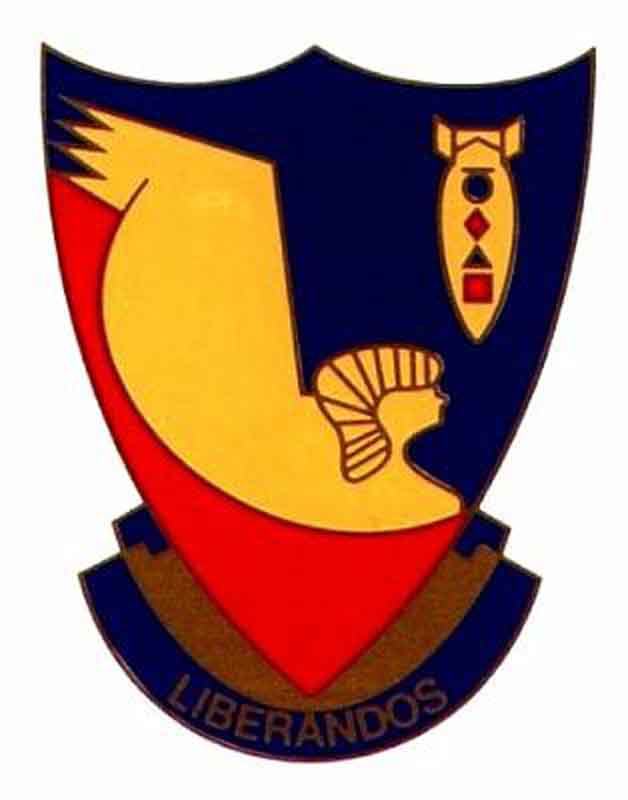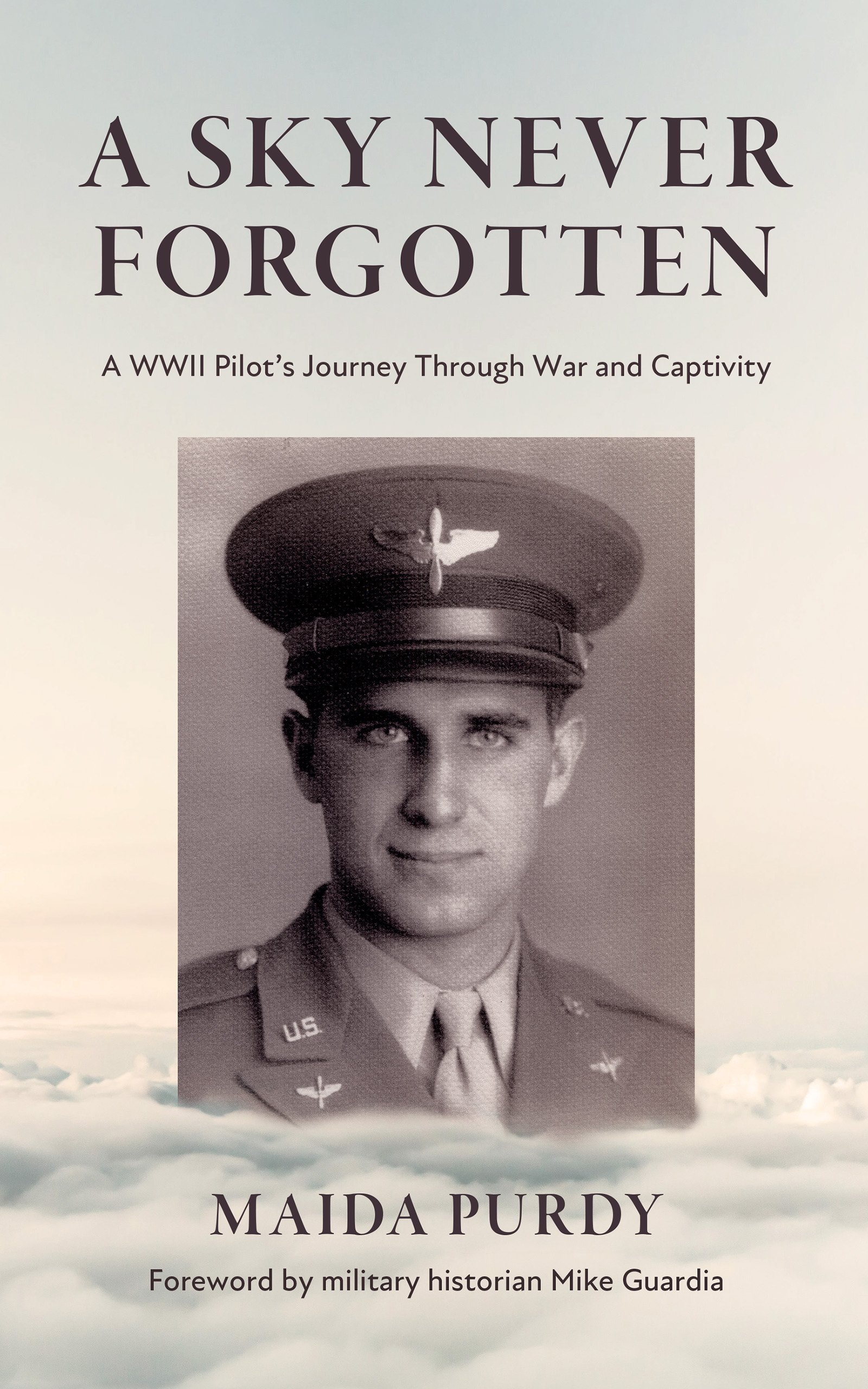58th Service Squadron

The 58th Service Squadron
Through the history of world aviation Many names have come to the fore ... Great deeds of the past in our memory will last, As they're joined by more and more.
When man first started his labor In his quest to conquer the sky, He was designer, mechanic and pilot, And he built a machine that would fly ... But somehow the order got twisted, And then in the public eye, The only man that could be seen Was the man who knew how to fly!
The pilot was everyone's hero, He was brave, he was bold, he was grand; As he stood by his battered old biplane With his goggles and helmet in hand... To be sure, these pilots all earned it, To fly you have to have guts ... And they blazed their names in the hall of fame On wings with bailing wire struts ...
But for each of these flying heroes, There were thousands of little renown, And these were the men who worked on the planes But kept their feet on the ground ... We all know Lindbergh, And we've read of his flight to fame ... But think, if you can, of his maintenance man, Can you remember his name?
And think of our wartime heroes, Gabreski, Jabara, and Scott... Can you tell me the names of their crew chiefs? A thousand to one you cannot!
Now pilots are highly trained people, And their wings are not easily won ... But without the work of the maintenance man, Our pilots would march with a gun ... So when you see mighty aircraft As they mark their way through the air, The grease stained man with a wrench in his hand Is the man who put them up there ... ·ANONYMOUS
*********
As the 376th moved westward from Soluch, Libya to Berka 2,Benghazi, Libya it was accompanied by the 58th Service Squadron, one of four service squadrons of the 62nd Service Group.The squadrons each composed of eight officers and 280 enlisted men, provided major maintenance support for the 376th, 98th and other bomb groups in North Africa. The 58th Service Squadron had an engineering section capable of making repairs on all of the major systems in a B-24. In addition, the unit operated seperate facilities for parachutes, sheet metal, fabric and metal machining. When one of the 376th aircraft sustained damage which exceeded the capabilities of the groups ground crews, it was restored in one or more of the 58th's tent shops. The 58th Service Squadron received a Four Point Commendation from the 47th wing HQ for the 58th's contribution to the 376th Bomb Group.
*********
58th Service Squadron personnel were all experienced specialists and include individuals such as Warrant Officer Floyd Black, assistant engineering officer, ,Sam Nero,Earl Jackman from the engineering section, and Les Richie who went on to become a very proficient calligrapher after the war.
*********
Les Ritchie, who was on the staff of the dope and fabric shop, winds up this part of our story with his recollections about being a member of the crew that painted then Col. Compton's P-40 fighter aircraft.
It seems that a transient ferry pilot brought a P-40 to the Berka 2 field at Benghazi sometime early in 1943.This was a normal procedure, for P-40's regularly came through the field on the way to the 57th Fighter Group. In this instance though, the ferry pilot was convinced somehow to leave the aircraft and go back to Cairo to pick another one for delivery to the 57th.
Early November is when Les recalled that Col. Compton wanted the P-40 that had been left with him by the ferry pilot repainted to remove the camouflage colors. First the paint shop crew of Chief Sgt. Harry Porter, Dan Ricci, Ed Michalski, and Les had to remove all the old paint from the metal and fabric surfaces, a very tough job. Then at the Colonel's request, they painted the plane silver -- lots of coats of paint and clear lacquer. The Colonel checked on progress every day, so the painting became a very serious business.
Next add the original insignia on the plane including the red and white stripes on the rudder. At the next inspection the Colonel said, "Something is missing -- it isn't moving. What can you do to make it look like it' s moving on the ground?" They then enclosed the exhaust area with color and added a red on silver speed stripe to the fuselage. Next they added pin wheels on the landing gear and nose spinner. Finally the initials "K.K.," 20" tall, were added in a script that Les designed on each side of the fuselage. The whole project took about six
weeks. When finished, the Colonel flew this plane and Norm Appold flew another P-40, made from the parts of three wrecked planes that the 58th had reassembled into one flyable aircraft, on various training missions for the B-24 crews. The two aircraft were used often and became very useful to the 376th. They made passes at the forming up squadrons, giving the B-24 gunners aiming practice; they observed training formation flying and encouraged tightening up; they followed the formations over the Adriatic and made formation flying corrections on the Group's way to the targets. This went on until Col. Compton and Major Appold went on to other assignments.
Appolds P-40 was pieced together from two aircraft that had locked wings while landing in formation in Soluch, and a third P-40 that landed wheels up in a nearby valley. A service squadron team recovered this aircraft on a flat bed trailer. After the aircraft was pieced together, Les Richie was again summoned to paint "Bon Bon" Appolds choice on the nose of the aircraft.
Where the two P-40's finally ended up is another story that we may look into in a future issue of the Intelligencer.
*****************
The Fifteenth Air Force
In the 18 months of existence the 15th Air Force,operating principally from the complex of airfields in southern Italy, destroyed all gasoline production within its range in southern Europe; knocked out all the major aircraft factories in its sphere; and destroyed 6,282 enemy aircraft in the air and on the ground.
The 15th crippled the enemy's transportation system over half of once-occupied Europe with repeated fighter and bomber attacks. On occasion it helped disperse enemy counter attacks and spearheaded the advances of our own armies.
The 15th dropped 303,842 tons of bombs on enemyY targets in 12 countries of Europe, including military installations in eight capital cities. Its combat personnel made 148,955 heavy bomber sorties and 87,73Z fighter sorties against the enemy.
It lost 3,364 aircraft and 21,671 personnel killed, wounded, missing and taken prisoner -- 20,430 bomber crewmen and 1,187 fighter pilots.
The 15th fought four broad campaigns: against enemy oil, enemy air force, enemy communications, and enemy ground forces. Most vital of the 15th's oil targets was the Ploesti complex of refineries, which contributed about 30% of the entire Axis oil supply and an equal amount of gasoline. Ploesti was protected by 150 first class fighters and 250 heavy flak guns when the 15th, with the cooperation of the RAF 205th Group of night bombers, began a series of attacks against it on April 5. The campaign continued until Aupust 19. 15th and RAF bombers flew 5287 sorties, dropping 12,870 tons of bombs. The cost was 237 heavies (15 of them RAF), 10 P138 dive bombers and 39 escorting fighters. More than 2,200 American Airmen were lost. But results were good. At the end of the campaign the refineries were reduced to only 10% of their normal rate of activity and during the entire period from April to August the average production rate was reduced by 60%.
The 15th followed up the Ploesti attacks by dropping 10,000 tons of bombs in attacks on three synthetic oil plants in Silesia and one in Poland, reducing their combined production by February of 1945 to 20% of what it was in June of 1944.
By devastating attacks on Weiner Neustadt and Regenshurg, two of the three main enemy fighter manufacturing complexes, the 15th helped materially in the attainment of European air supremacy. By May 1944, estimated actual production stood at 250 aircraft a month within range of the 15th against a contemplated production of 650 aircraft per month.
Throught the counter-air force and oil campaigns, the 15th was also attacking enemy communications and transportation systems far behind the front lines, disrupting supply movements from industrial centers over an 8OO mile radius from the ItaIian airfields.
The 15th also supplied Allied Army cooperation bombing targets at Salerno, Anzio, and Cassino in the Rome campaign. On April 15, 1945 the 15th put up a recordsmashing 93% of its available aircraft to soften up the approaches to Bologna in one of the final missions of the Italian campaign.
A unique sidelight of the 15th's operations has been the rescue and repatriation of air crews shot down in enemy territory. No other air force has undertaken escape operations in so many countries. The 15th has returned 5650 personnel by air, surface vessel and on foot through enemy lines. In more than 300 planned "reunion" operations, men have been brought back safely from Tunisia, Italy, France,Switzerland, Greece, Albania, Bulgaria, Rumania, Hungary, Yugoslavia, Austria and Germany.
Editor's Note..This "summary" was given to the men of the 58th Service Squadron subsequent to their return to the United States, Its purpose was to "furnish them with background information for their use in local newspaper articles or interviews, and a worthwhile personal history in the years to come when when such facts may be extremely vital to your own interests".
·
**********
We start this second part of the 58th Service Squadron story with a few excerpts from the first and second issues of "The Penguin" newsletter dated in July and September of 1943.
Do you know? Of course you don't, so "The Penguin" will start its line of chatter on Who's Who and where Who came from. At one time we had men in the 58th representing 41 states, but at present we can only account for 35. It seems to have been the popular belief between the Missourians and Texans that their state ranked first in the number of men in this squadron. Contrary to this belief, the figures show Washington in the lead with 35 men. Missouri will have to be content with 25, and Texas ranks third with 17 1/2 or 18 men.
The Officers of the 58th represent seven different states. Major Newman from Kansas, Capt. Robert Hoffman from New York, Capt. Harold Parker from Kentucky, Lt. Melvin Aschenbach from Ohio, Lt. Donald Philpot from Missouri, Lt. Morris Munson from Iowa, Lt. Madden from Ohio, Warrant O. Maurice Rankin from Missouri, Warrant O. Bjerklund from Washington.

The website 376bg.org is NOT our site nor is it our endowment fund.
At the 2017 reunion, the board approved the donation of our archives to the Briscoe Center for American History, located on the University of Texas - Austin campus.
Also, the board approved a $5,000 donation to add to Ed Clendenin's $20,000 donation in the memory of his father. Together, these funds begin an endowment for the preservation of the 376 archives.
Donate directly to the 376 Endowment
To read about other endowment donation options, click here.
Reunion
NOTE change in the schedule !!
DATES: Sep 25-28, 2025
CITY:Rapid City, SD
HOTEL: Best Western Ramkota Conference Hotel; 2111 North LaCrosse St., Rapid City, SD 57702; 605-343-8500
Click here to read about the reunion details.




















